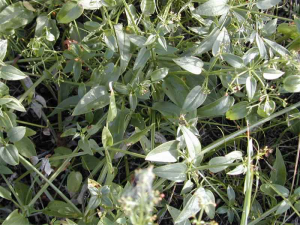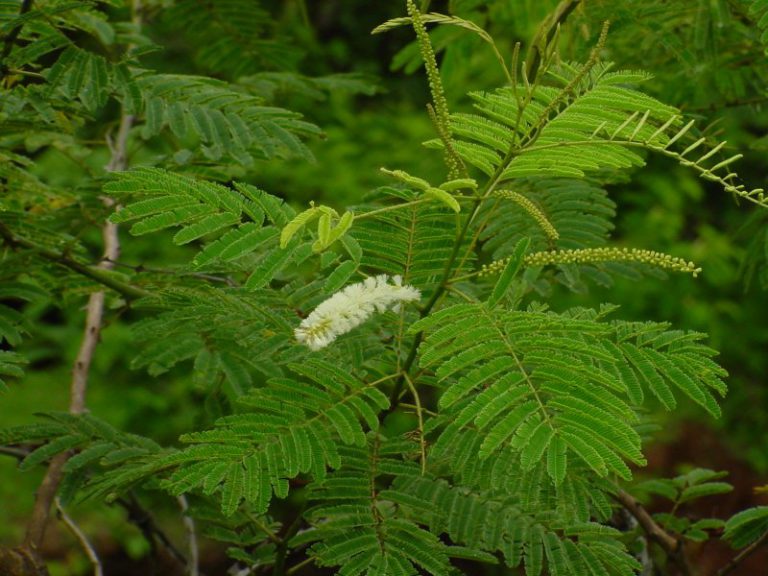Table of Contents
MANJISTA
Rubia cordifolia – Ayurvedic Herb
Manjishta’s anticedance dates back to vedic period. In Aitereya Aranyaka is described. During upanayana samskara ksathriyas are expected to wear the cloths coloured with “Manjishta”. It is known as artificial colouring agent from the beginning. However, Ayurvedic texts emphasized its role in medicinal usage.
Charaka described it as Jwarahara while sushrutha mentioned it as Pitta Shamaka. All the texts have delineated it as the herb useful to improve the colour and complexion of skin. It is famous as Rakta Shodhaka (blood purifier) in the traditional medicine.
At present it is used mainly as natural colouring agent in the fabries industry. Current research revealed that Rubia cordifolia is a potent anticancer / antitumour drug.
In vaidya chinthamani , manjishta is enumerated among the ‘Kanda Sara’ dravyas . Therefore it may be concluded that ‘root’ is the useful part in ‘Manjishta’.
- Botanical source is Rubia cordifolia Linn.
- Family is rubiaceae
- Sri Chunekar KC reported that Rubia cordifolia is an adulterant for ‘swertia chirata’.
- It is also reported that Oldenlandia umbellate or Hedyotis hispilla or Hedyotis indica is an adultrant for ‘Manjishta’.
VARIETIES
- Rubia tinetorium Linn: ie, Acc to Gangadhara (C.S. Su. 4); Srikanthadatta (Si. YD.65/141); Dalhana (S.S.Sa. 10).
- Ramakanta Manjishta ie, Acc to Bhoja (Bha. Pra. Nirukta Yoni roga).
SYNONYMS
Manjishta : Has pleasant colour, Provides good colour.
Yojanavalli : It spreads to long distances along with its good
qualities.
Raktayashtika : Stem is red in colour.
Raktangi : The roots and other parts are red.
Rasayani : It has rasayana property.
Vasthraranjani : It is used for dying fabric.
Vikasa : Spreads along distances.
Samanga : Spreads in all directions.
Kaalameshi : It fights against aging.
Chithraparni : Leaf base is cordate.
Jvarahanthri : It cures fever.
Thamramoola : Red coloured roots.
Bhandi : Provides good complexion.
VERNACULAR NAMES
- English – Indian Maddar
- Hindi – Manjetha
- Kannada – Manjishta
- Malayalam – Punta
- Telugu – Manjishta
- Tamil – Manjetti
- Marathi – Manjth
- Bengali – Manistha
- Gujarathi & Punjabi – Majith
PARTS USED
- Root
MAJOR CHEMICAL CONSTITUENTS
- Anti tumor cyclic hexapeptides RA-V and RA-VII along with RA-I-IV.
- Anthraquin ones munjistin.
- Purpuroxanthin, rubiatriol, rubicoumaric acid.
- Rubifolic acid.
- Pseudoparpurin, alizarin, rubiadin, rubimallin, purpurin, xanthopurpurin, ruberythric acid.
PROPERTIES
- Rasa : Madhura, Thiktha
- Guna : Guru, Ruksha
- Virya : Ushna
- Vipaka : Katu
- Doshaghnatha : Kapha – Pittahara
- Karma : Varnya, Vishaghna
YOGA
- Maha manjishtadi Kvatha : (B.P.N)
- For tvak dosha, 18 varieties of
- Also useful in vatarakta , prasupthi, Visarpa, constipation, blood disorders.
- Laghu manjistadi Kvatha : [BPN]
- In Vatarakta, Kandu, Pama, Raktamandala, dadru, visarpa, visphota.
- Madhyama Manjistadi Kvatha; [B.P.N]
Vatarakta, kandu, visarpa, Visphota.
- Sindhuradi Taila : [B.P.N]
Useful to get rid of Pama.
- Adityapaka tailam:
Oil is very useful to get rid of pama.
- Pancha thika guggulu ghritha
Nadivrana, arbuda, bhagandhara , gulma aruchi, svashana, peenasa, Kasa, vatarakta.
- Nava Kashaya: [Vangasen]
Indicated in kushta caused by Kapha & pitta.
- Pinda taila: In vatarakta.
- Manjishta Lepa: Mixed with shatha dhoutha ghrita & applied over Bhagna pradesha.
KARMA
- Rakta prasadana – Raktashodhaka [K.N], [B.N]
- Varnya – tvachya. [Kaiyadeva. N] [Bhavaprakash .N]
- Mastika- Nadishamaka.
- Dipana-Pachana- amapachana. [K.N], [B.N]
- Stambhana [Kaiyadeva. N]
- Krimigma [Kaiyadeva.N]
- Kaphagna [Raja. N]
- Garbhashayottejaka- Artavajanana [Kaiyadeva. N]
- Stanyashodhana [Kaiyadeva. N]
- Pramehaghna [Kaiyadeva. N] Bhavaprakasha.N
- Kushtaghna [Bhavaprakasha.N] [Kaiyadeva.N]
- Jvaraghna [Bhavaprakasha.N]
- Balya- rasayana [Baiyadeva.N]
- Vishaghna [A.H. Uttara 36-59]
- Shothahara [ Rajawallabha.N]
- Arshoghna [Kaiyadeva.N] [ Bhavaprakasha.N]
- Sandhaniya [Vrindhamadhava, 46-3]
- Svarya [Raja. N. Pippalyadi Varga]
PRAYOGA
- Kushta [Kaiyadeva. N]
- Charmavikara [k.N]
- Vrana- Visphota- Visarpa-Pidaka [K.N. D. Ousadhi varga]
- Kshudraroga – Nilika – Vyanga [Charadatta.K.1191-93]
- Arshas [K.N]
- Visha –Sarpavisha – Astanga. H.Uttara, 36-59.
- Prameha- Manjishtameha [K.N], [B.N]
- Agnidagdha [Chakradatta]
- Bhagna [Vrindhamadhava, 46-3]
- Shlipada [K.N]
- Shotha [ Rajavallabha.N]
- Muthrakrichra [Rajavallabha. N]
- Agnimandhya – Amadosha- Atisara [K.N] [B.N]
- Krimiroga [K.N]
- Raktasrava [K.N]
- Kasa-Svarabheda [R.N. Pippalyadi varga]
- Kashtartava – Rajorodha [K.N]
- Prasavottara vyapat- stanya shuddhi [K.N]
- Jvara, Dourbalya. [B.N]
- Akshi- Karnaruk. [K.N, Oshadhi. V] [B.N] [Chakradatta]
PHARMACOLOGICAL STUDY
Haemostatic effects
Anti-platelet aggregation.
Leukogenic effect; By carboxylic acid glycosides with aromatic rings.
Anti sputum effect
Anti carcinogenic effect
Urinary Calculi effect
Myocardial infarction treatment
Effect on smooth muscles.
FLOWERING AND FRUITING TIME
Plant flowers during rains or July. September, and its fruiting stage begins onwards. ie “September- November”.
THERAPEUTIC USES
- Gynacological problems like white discharge and irregular menstruation.
- Manjishta meha; Manjishta and candana kasaya is useful [S.S Ci 11/9].
- Arsas ; In bleeding piles ghee prepared with manjishta and sigru should be given. [S.S. Ci6/9]
- Kandabhagna : Manjishta and Madhuka are made into paste using amla dravyas and applied externally [V.M]
FOLKLORE USE
o It s paste should be applied in various skin disorder like itching, black spots on the face, pimple, leucoderma etc.
o Decoction of Manjishta cures various skin disorders & blood disorder.
RESEARCH STUDY
- Rubimallin showed antibacterial activity [yaoxue Yuebao 1990, 25, 834].
- Antitumour cyclic hexapeptide, RA-VII from Rubia cordifolia is reported [ilokawa et. Al. 92]
- Four napthohydroquinones and two naphthohydroquinones from Rubia cordifolia and their cytoloxic activity are reported [Itokawa et al. 1993]
- Anti tumor activity of RC-18, a pure isolate from Rubia cordifolia was reported [Adwankar & Chitnis, 1980 & 1982]
- The anti –peroxidative property of Solvent free alcoholic exhact of Rubia Cordifolia has been studied in rat liver homogenate. It prevents the eumene hydroperoxider induced malondialdehyde formation in the does & time dependent manner. This effect is accompanied by the maintained reduced glutathione level even in the presence of above toxin [Pandey et al. 1994]
- The blood purification effect of the partially purified fraction of this whole plant has been studied on rabbit platelets. It inhibits the platelet aggregation induced by PAF [ Platelet activating factor] but not thrombin. It also inhibits the binding of 3H- PAF to the platelets in the dose dependent manner. Thus it appears That R. Cordifolia inhibits action of PAF at its receptor level either by its blocking or by desensitization [Thripathi et al. 1993]
- The napthohydnoquinone suppressed the secretion of hepatitis B surface antigen [HB s Ag] in human hepatoma hep 3B cells [Ho et al. 1996].
DOSAGE
Powder [ churna] : 11 – 5 g.
Kvatha [Decoction ] : 50 -100 ml.
Solid extract [ with water] : 150 – 540 mg.
Dried extract [ With water }; 105-315 mg.
NON MEDICINAL USE
Manjishta is used as colouring agent in fabric industries.
During upanayana samskara the kshatriyas are expected to wear the cloths coloured with Manjishta .
It is known as artificial colouring agent from the beginning.









